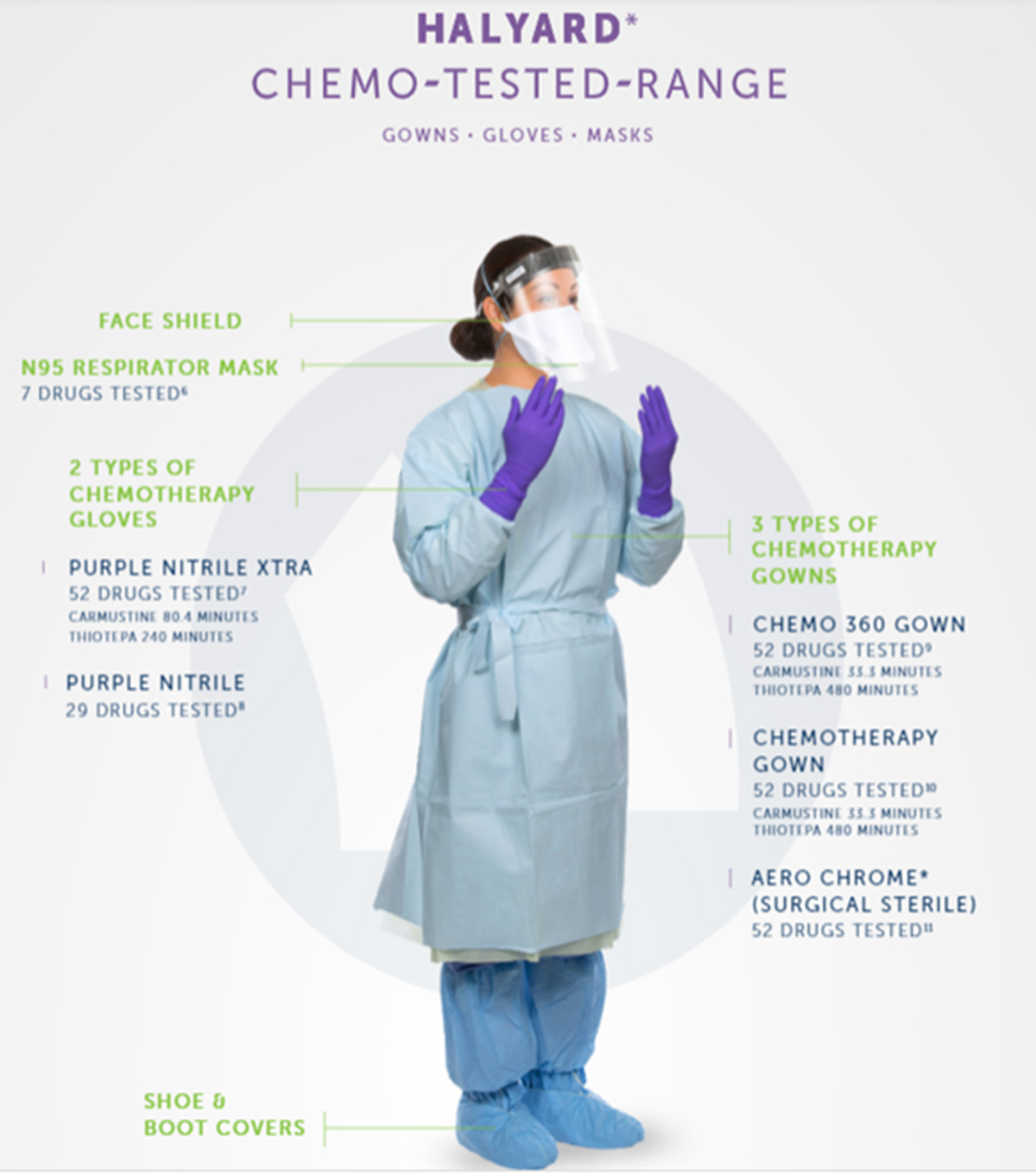Chemotherapy
Protection
There is NO SAFE LEVEL OF EXPOSURE to cytotoxic chemotherapy drugs for healthcare workers.
Protect yourself and your team with HALYARD* chemo-tested PPE.
Always read the label and follow the directions for use.

Rigorously tested, so you know you're protected.
With the health of your staff at risk, it is essential to provide PPE that has been rigorously tested and approved for use with an extensive range of cytotoxic drugs.
Halyard’s CHEMO-TESTED-RANGE provides superior protection from top to toe.
Is Your Team Exposed?
As you and your staff go above and beyond to care for your patients, it’s important to consider your own long-term health by minimising your risk of exposure.
The risk to you is real.
1
An estimated 750,000 ANZ healthcare workers are exposed to hazardous drugs annually.1
2
60% of Australian clinicians using closed systems, have experienced a cytotoxic spill or splash in the last 12 months.2
3
Exposure to chemo increases your risk to:
- Chromosomal damage
- Cancers
Adverse reproductive outcomes, include 2 to 3.5 times greater risk of miscarriages.3
HALYARD* CHEMO360* Procedure Gown Tested For Use With Chemotherapy Drugs
The HALYARD* Chemotherapy Procedure Gown is an over-the-head gown with an open back and knit cuffs.
- Tested for resistance to 52 chemotherapy drugs. Halyard tests the full, finished gown for resistance to permeation, including all sleeves and seams.
- The fabric used in our chemotherapy gowns also passed ASTM F1670 and F1671 against blood and bloodborne pathogen penetration, for increased protection.
- Surgical Gown, sterile, also provide chemotherapy protection against 52 drugs.
- This product is not available for purchase by the general public.
HALYARD* Chemotherapy Procedure Gown
PURPLE NITRILE* Exam Gloves
PURPLE NITRILE* Exam Gloves
- PURPLE NITRILE* Exam Gloves provide outstanding barrier protection designed for procedures involving a potential risk for exposure to cytotoxic and other hazardous drugs. PURPLE NITRILE* Exam Gloves offer the highest level of chemotherapy protection available in Halyard’s line of nitrile exam gloves.
- Healthcare professionals in the ER, ICU, Lab, and Oncology Units of acute care facilities, as well as EMS staff, Dental clinicians, and Cancer Center specialists all rely on PURPLE NITRILE* brand of exam gloves. When they see that unique purple color, clinicians know they have the protection they can trust, and that gives them the confidence to provide the best care to every patient.
- PURPLE NITRILE-XTRA* Exam Gloves (310mm) have been tested against 52 chemotherapy and hazardous drugs.
- PURPLE NITRILE* Exam Gloves (252mm) have been tested against 29 chemotherapy and hazardous drugs.
Request Information
Please fill out this brief form to contact one of our representatives
Sources
- Estimate based on Centers for Disease Control and Prevention, Hazardous Drug Exposures in Health Care, www.cdc.gov/-niosh/topics/hazdrug/default.html usingsame percentage of population of Healthcare workers in Australia and New Zealand as for US population. Nurse enrollment figures from Health Workforce Australia2014: Australia’s Future Health Workforce – Nurses Overview, published 10 October 2014.
- 2018 Market Research. Data on file.
- Lawson CC,RocheleauCM, Whelan EA, et al. Occupational exposures among nurses and risk of spontaneous abortion. Am J Obstet Gynecol. 2012 Apr;206(4):327.e1-8.
